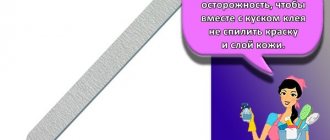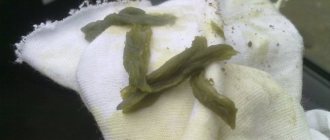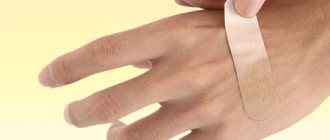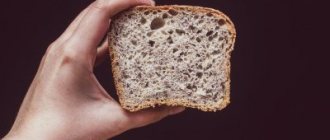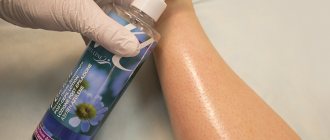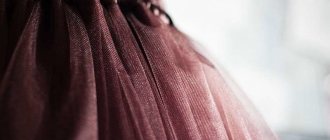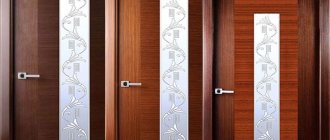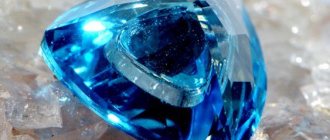How to remove superglue from a table
If you forget to cover your table while working with this permanent adhesive, you need to understand that it is still possible to clean the tabletop.
It is possible to wipe off superglue from a table. The main methods that are used can be divided into the following types:
- Impact of temperature changes. The composition of superglue can withstand heavy loads, but it is not ready for increased heat. That is, you can try to remove the stain using an iron or hair dryer.
- Mechanical action. Using forceful methods such as sanding, knocking, scraping or wiping away the cured adhesive material may help. But there is a high risk of damage to the table surface itself.
- To understand exactly how to remove super glue from the table, you can purchase a product designed specifically for this process. But such products cannot be used on all surfaces.
- Solvents. Anything that contains acetone in its composition. They also behave aggressively towards some materials, but they will certainly be able to scrub your table.
You can clean up glue spilled on the table in various ways.
Do not work with acetone-containing liquids in enclosed spaces.
Folk remedies for removal
Sometimes, when there are no special means to remove glue, traditional methods are useful. They are not as aggressive towards hands and surfaces, but are also less effective, acting on the adhesive much more slowly.
You can try traditional methods. Regular moisture will help remove glue stains, provided that the glue was spilled recently. If you can’t wash it right away, then place a wet cloth or napkin on the adhesive stain and leave it, constantly wetting it for a day.
You can try to remove a fresh glue stain with a wet rag. Peroxide is also a good way to remove dirt from a metal countertop. Apply to the stain and leave for a quarter of an hour, then rinse with water.
The stain can be moistened with pharmaceutical peroxide. Vinegar for cleaning the table is applied to the surface, the action time is thirty, forty minutes.
Table vinegar can be applied to the stain for 30-40 minutes. Soda, a paste made from it, will be able to scrub off glue only with significant mechanical impact.
The glue stain can be sprinkled with baking soda. Face cream or Vaseline acts on the glue, softening its surface, which leads to easier removal of the stain or drop of glue.
Cosmetic petroleum jelly can soften the surface of the glue stain. Most of these methods help to clean the surface of the table, but only if repeated many times, since it does not dissolve the adhesive, but only softens it.
Acetone
By using this product, you will know exactly how to remove glue from a table. Take a cotton pad or a piece of rag, moisten it with acetone and wipe off the place where the unnecessary glue got.
Acetone is quite effective for removing glue stains. The glue becomes pliable and its adhesion to the table surface disappears. A fairly quick way to clean a table. The disadvantage is a strong smell; to remove it, the area that was treated is washed with soapy water.
The product is applied to a cotton pad or swab and used to wipe the area with glue.
Alcohol
If you need to clean a tabletop made of wood or glass from glue, use alcohol. Apply it directly to the stain, wait five to ten minutes and remove the residue with a regular cloth. It is also necessary to rinse with water after treatment.
Alcohol will help remove glue stains from glass and wood.
Do not use alcohol to treat plastic surfaces, as this can cause streaks and damage the table.
Oil
A natural solvent that is safe for surroundings and surfaces (except absorbent ones, such as natural wood). It is possible to remove glue with oil; it acts by causing the adhesive film to crack and soften, which makes it possible to easily get rid of the stain. Also perfect for washing off glue residue from your hands.
The oil can be used on almost any surface, except those that are highly absorbent.
Use of special means
In order to remove unnecessary glue residues remaining on the surface, you can purchase special products. Many people use Dimexide and Anti-Glue.
Dimexide, a drug from a pharmacy, in addition to its direct medicinal purpose, was useful as a folk remedy for removing and dissolving stains remaining after many works. Gloves are required to work with it; allergies may occur.
Dimexide is a pharmaceutical drug that must be handled with protective seals. Anti-glue - development of superglue manufacturers. When using, be sure to read the instructions, as it is not recommended to work with all surfaces. But Anticley copes with his task perfectly. Effective and within a short period of time.
To clean the surface, you can use a special product - Anti-glue.
Mechanical method of removing glue
Mechanical methods include scraping, rubbing, or knocking material off the surface. That is, all those in which physical effort is used.
Mechanical methods are those that use physical force to get rid of the stain. The most important drawback with this effect is the possibility of causing damage (damage) to the surface being cleaned. When you have been able to soften the glue using any of the methods listed above, you can use a knife or other object with the help of which cleaning manipulations are performed.
You can remove softened glue from the surface with almost any object. The main thing with such work is to carry it out in a direction away from you so as not to accidentally injure yourself. It is advisable to use mechanical force on superglue, provided that it has been poured out in large quantities. If the stains are small, it is better to use other methods.
Mechanical action is appropriate if a large amount of glue has been spilled.
Important Tips
In order not to aggravate the situation and not complicate your work, remember a few simple tips:
- Do not wipe off drops of fresh composition with a rag or napkin . You will stretch the second glue over the surface and instead of a small drop you will have a large dirty area that is much more difficult to wipe off. Take a toothpick, a piece of construction paper, or something else and carefully pry the droplet to remove it with minimal damage.
- Do not try to remove the glue with your fingers . Anyone who has had similar compounds come into contact with their skin knows how unpleasant it is and how long it takes to scrub their fingers off afterwards. Always use a tissue or something else to remove dirt without getting dirty.
Everything sticks to glue-stained fingers
- The sooner you start work, the better . No need to wait for the surface to dry. When the mass polymerizes, it becomes tens of times stronger and harder. But fresh stains can be removed much easier and faster, and you are almost guaranteed to remove the glue without a trace, which is not always possible if it has dried out and become embedded in the surface.
- It is better to prevent a problem than to fight it . Before starting work, I advise you to cover the tabletop with a rag or newspaper, so that even if the glue spills, you can easily clean it up. You can lay a sheet of paper only on part of the table, this is usually quite enough to glue something together.
Cover the table with paper, and if you spill the composition on the surface, cleaning it up will be as easy as pie
- Try different means . The effectiveness of one or another option depends on a number of circumstances. Therefore, I advise you to start with the simplest solutions that are at hand. And if they do not give the desired effect, then use more potent formulations.
- Always be careful while working . You need to be very careful when cleaning a varnished table, as the coating is easily damaged. To avoid polishing the surface later and re-painting it, do not rub too hard.
- Try chemicals on an inconspicuous area . To make sure that the product you choose does not damage the surface or leave marks on it, drop it on an inconspicuous area and wait a few minutes. If nothing happens, you can use this composition.
Features of removing fresh stains
Fresh drops of superglue can be washed with regular laundry soap. We rub a small amount with a grater, dissolve it in warm water and, using a bristle brush or dishwashing sponge, clean the stained area on the table with soapy water.
Fresh glue stains can be removed with regular laundry soap. You can also use a solution made from laundry detergent. But all this can work provided that the glue stain is completely fresh and has not had time to dry completely.
This method is only suitable for fresh stains.
Anticlean
It would be best to immediately purchase, along with the second glue, a special product that neutralizes its effect. It is called “Anti-glue” and is produced by many manufacturers.
- apply Anti-glue to the adhered mass;
- maintain the time specified in the instructions;
- After the chemical reaction, roll up the separated superglue with a rag.
This universal product will safely remove glue from wood, fabric, and even the skin of your hands.
How not to damage the table surface
When cleaning the countertop, you need to understand what and how can ruin your furniture.
When cleaning the surface of glue, the main thing is not to spoil it. To do this, you need to take some precautions:
- Carry out a mandatory test before cleaning with unfamiliar means. It is advisable to do this on a surface area that in the future, even if damaged, will not attract attention.
- Do not use strong chemical compounds if you know that food will be cooked on this surface in the future.
- Do not apply too much mechanical force to the surface; sometimes it is worth waiting a little and softening the adhesive for easier removal.
- Be sure to use protective equipment when doing this.
Where necessary, use protective equipment.
Cleaning with alcohol
Alcohol is a solvent for glue. Therefore, if you wipe the contaminated area with force with an alcohol-soaked cloth, it can be cleaned completely. If rubbing does not help, then you can pour a little if the surface is horizontal. After 10 minutes you need to wipe with a rag and there will be no glue.
How to remove glue from other surfaces
Superglue is a substance that always ends up in the wrong place.
Glue very often does not end up where it was originally planned. Therefore, it is worth considering how you can remove it from other surfaces and materials:
- Clothing, fabrics. You can't just wash off the superglue. The easiest way to remove glue stains is by heating or cooling. In the first case, we use an iron, heating the item through paper or napkins until the glue is completely absorbed into the paper. In the second case, we simply take the item, put it in a plastic bag and place it in the freezer for an hour and a half. Frozen glue can be removed.
- Hardware. Alcohol, acetone-containing preparations, vinegar, gasoline all work well for cleaning, but testing on a small area is necessary. The composition of the metal from which the furniture is made is not always known to the user and the reaction to the cleaning product may not always be expected.
- Smooth materials such as tiles or marble. Removal from these surfaces is quite simple. Alcohol, exposure to hot liquid, acetone, glue on smooth surfaces softens faster, then scraped off using plastic spatulas or other tools. The main thing is to be careful because these surfaces scratch easily.
- Plastic and glass surfaces. Glass cleaner is perfect for cleaning them. We apply the product, wait for the stains to soften and slowly remove them using a scraper.
- Screens, monitors. This equipment can be cleaned with Dimexide. After removing any remaining glue, this surface must be wiped with a damp cloth and then wiped dry.
- If you accidentally drop adhesive onto your glasses, you can remove it with a nail polish remover that does not contain acetone.
- Wooden furniture and wood surfaces. Remove glue stains using a solution of citric acid or fresh lemon juice. Varnished wood items are strictly treated with solvent-free preparations.
With the right approach, you can remove glue from almost any surface. In order not to have to use all of the above methods of dealing with glue stains, it is necessary to observe certain conditions. Be careful if you know there is a risk of surface contamination.
To avoid having to scrub off superglue, be as careful as possible when using it. Protect it from this by covering it with something. And only after that start working. Be sure to protect your hands and eyes from getting glue. And when working to remove it, ventilate the room often.
Operational approach
The easiest way is water. It will easily remove any water-based product.
They are made using adhesive and water. After the water dries, the necessary parts are glued together.
IMPORTANT. It is best to remove unnecessary fastening agent before it dries completely. Otherwise, difficulties may arise with this process.
Anticlean
It would be best to immediately purchase, along with the second glue, a special product that neutralizes its effect. It is called “Anti-glue” and is produced by many manufacturers.
- apply Anti-glue to the adhered mass;
- maintain the time specified in the instructions;
- After the chemical reaction, roll up the separated superglue with a rag.
This universal product will safely remove glue from wood, fabric, and even the skin of your hands.

